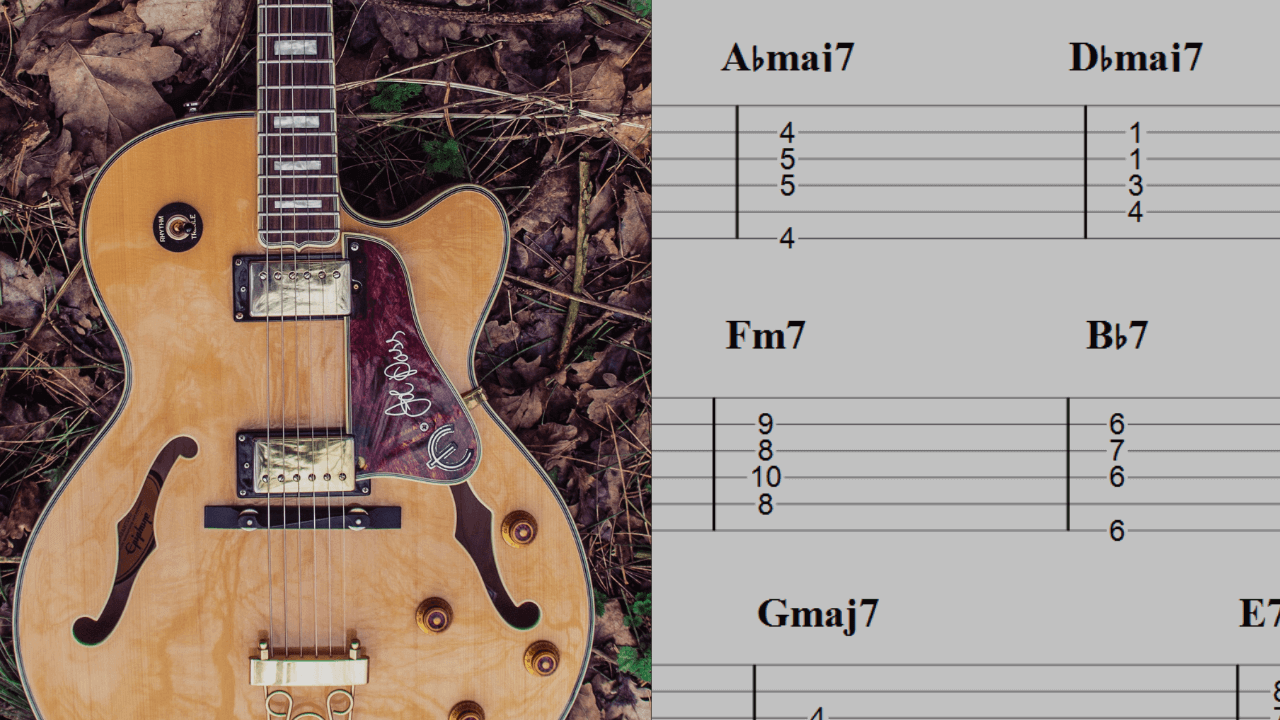Crafting compelling neo soul compositions requires a nuanced understanding of chord progressions unique to this genre.
Known for its blend of traditional soul elements with contemporary sounds, neo soul has emerged as an exciting arena for musical exploration.
Its chord progressions, marked by complex and rich harmonies, help create the genre’s distinctive, emotive mood.
Expanding your knowledge of these elements not only balances your compositional approach but also promotes a creative edge in your music.
It’s not simply about acquiring a wider range of chords – it’s about knowing how to use them, too.
This post aims to provide an in-depth guide for understanding and utilizing neo soul chord progressions, benefitting both novice and experienced musicians seeking to elevate their craft.
Table of Contents
- Neo Soul Chord Progressions
- I-IV-V (1-4-5)
- ii-V-I (2-5-1)
- vi-ii-V-I (6-2-5-1)
- I-III-vi-ii-IV-V (1-3-6-2-4-5)
- ii-iii-IV (2-3-4)
- ii-IV-V (2-4-5)
- vi-IV-V-iii (6-4-5-3)
- vi – IV – I – V (6-4-1-5)
- iii-vi-ii-V (3-6-2-5)
- IV-iii-ii-I (4-3-2-1)
- I-vi-ii-V (1-6-2-5)
- I-bIII-bVI-V (1-b3-b6-5)
- IM7-IVm6 (1M7-4m6)
- I-vi-IV-V7 (1-6-4-5)
- I-III-IV-iv (1-3-4-4m)
- The Bottom Line
Neo Soul Chord Progressions
I-IV-V (1-4-5)
Elevate your melodies with the invigorating spin of Neo Soul 1-4-5.
The I-IV-V (1-4-5) progression is a harmonic foundation often used in Neo Soul music, renowned for its simplicity yet powerful emotional resonance. This sequence creates a timeless, organic sound that can elevate a song’s overall feel, bringing depth, soulfulness, and a sense of musical narrative.
- Difficulty: Easy
- Example: C – F – G (Key of C)
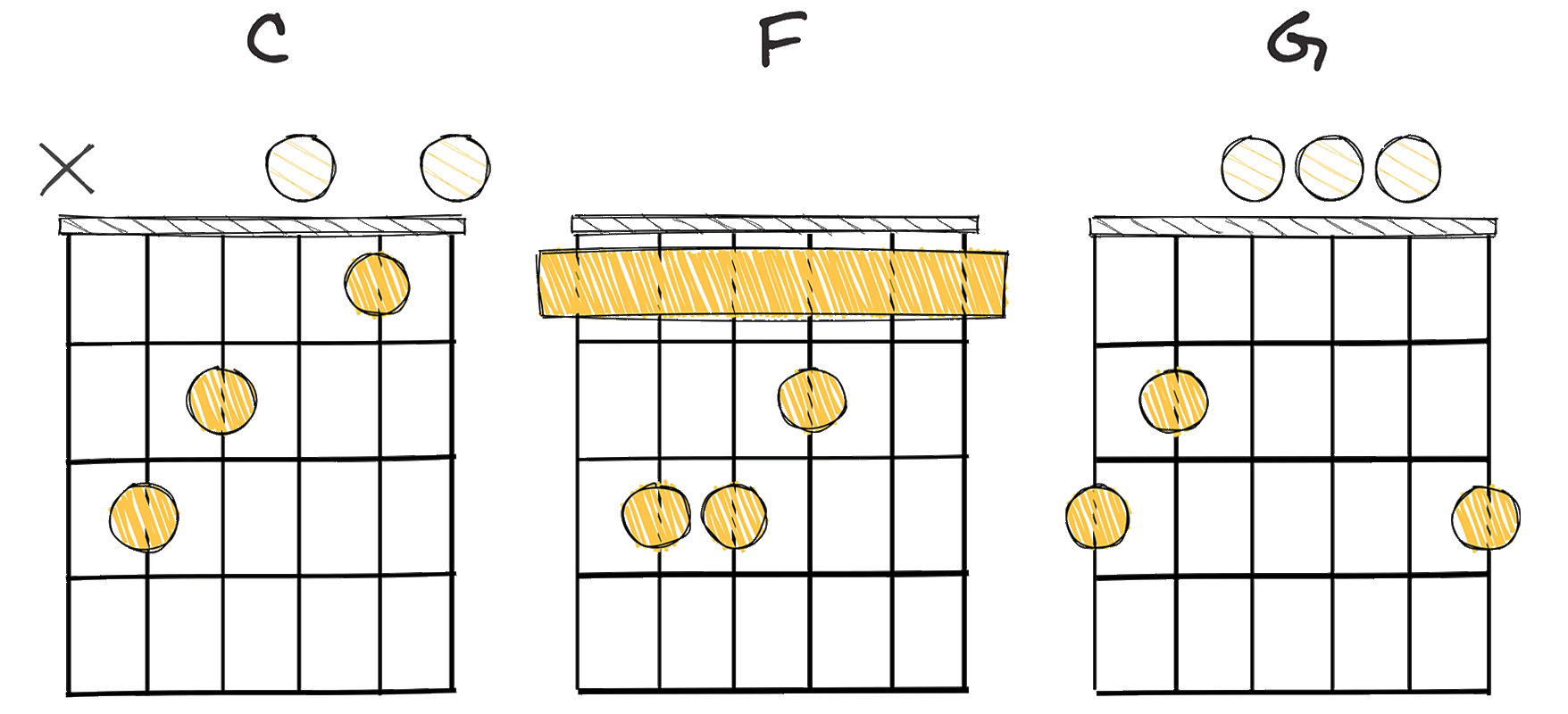
The use of chord progression I-IV-V in neo soul music significantly contributes to its unique sound and emotional depth.
Musician and scholars alike agree that the chord progression I-IV-V has been fundamental in shaping a wide range of music genres, including Neo Soul.
History reveals that this chord progression has been used by musicians since the classical era, and it continues to be favorites among contemporary artists today.
Rooted in traditional blues music, the I-IV-V progression is often referred to as the “blues progression“.
The progression’s simplicity and flexibility make it an excellent base for songwriters to experiment and create soulful, compelling music.
The I-IV-V progression is extremely easy to play, making it particularly attractive to neo soul artists who aim to create deeply emotive music with a seemingly effortlessly foundations.
In support of the aforementioned quote, many budding musicians commence learning with this progression due to its simplicity and versatility.
Also, the ease with which a songwriter or composer can modify and add to this progression allows for a lot of creativity and variation, which is a hallmark of the genre.
Highly successful neo soul artists have utilized this progression to create hits that resonate with listeners on a deep, emotional level.
The I-IV-V progression does not get old, even with repeated use, because the three chords can be arranged in numerous, almost infinite, ways.
The rhythmic variations and the key in which the progression is played can completely alter the mood and color of the song.
The chord progression I-IV-V is foundational in creating music that resonates, that cuts deep, and that speaks to the soul.
As such, neo soul artists continue to revisit it in their compositions, creating a wealth of soulful, touching melodies that captivate listeners.
Without the I-IV-V progression, neo soul would not have its unique sound and emotive power.
ii-V-I (2-5-1)
A classic Jazz staple, uniquely redefined by expressive Neo Soul rhythm.
The ii-V-I progression is a timeless and fundamental chord sequence found in various genres, particularly in Neo Soul music, known for its smooth and emotional resonance. It involves moving from the second scale degree to the fifth degree, and finally to the first, creating a powerful resolution that enhances the richness and depth of any musical piece.
- Difficulty: Intermediate
- Example: Dm – G – C (Key of C)
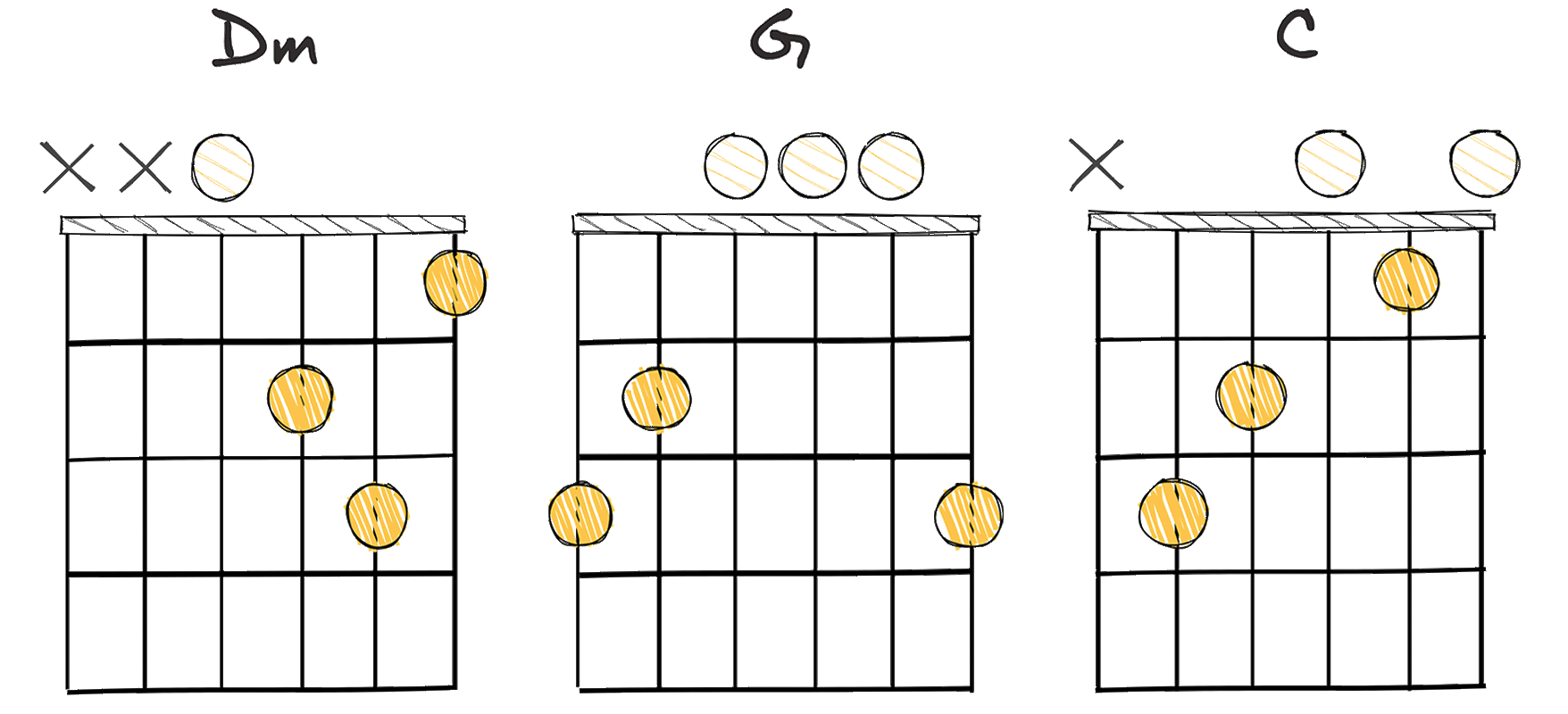
One of the most vital and versatile chord progressions in neo-soul music is the ii-V-I sequence, often represented by the roman numerals and chords: Dm – G – C in the key of C.
Neo-soul artists have embraced the ii-V-I progression due to its fascinating harmonic possibilities and the soulful feeling it gives to a track.
For instance, the ii-V-I progression has been a fundamental structure in the works of neo-soul artists like D’Angelo, Erykah Badu and Jill Scott, to name just a few.
Its popularity in neo-soul music can largely be attributed to its roots in bebop jazz, a genre that hugely influenced R&B and, subsequently, neo-soul.
When bebop artists started crafting faster, more complex versions of jazz, they often relied on the ii-V-I progression for its ability to smoothly transition between keys.
Bebop jazz’s impact on R&B then transferred this love for the ii-V-I progression onwards to neo-soul musicians.
The ii-V-I progression’s compatibility with various other chord progressions is another reason for its use in many neo-soul songs.
Just like jazz musicians before them, neo-soul artists use the ii-V-I progression to give their music depth, harmonic richness, and a throwback sensation to classic jazz sounds.
Beyond its rich history, the ii-V-I progression also offers musicians an approachable way to navigate chord changes.
As an intermediate level progression, the ii-V-I presents the right balance of challenge and accessibility for musicians looking to expand their repertoire.
With some practice, even less-experienced players can start incorporating this progression into their music and start creating that classic neo-soul sound.
Note that ii-V-I progression is not just confined to neo-soul; it appears in many other genres, making it a good tool to learn for any serious musician.
Once musicians have mastered the ii-V-I progression, they can start using it as a foundation to explore more complex progressions and create more nuanced musical pieces.
vi-ii-V-I (6-2-5-1)
This progression provides a smooth, soulful backbone to Neo Soul music.
The vi-ii-V-I is a popular chord progression in Neo Soul, renowned for its smooth transition between scales while retaining a rich, jazzy feel. This progression creates a moving, soulful ambiance, making it a powerful tool for enhancing any musician’s sound.
- Difficulty: Intermediate
- Example: Am – Dm – G – C (Key of C)
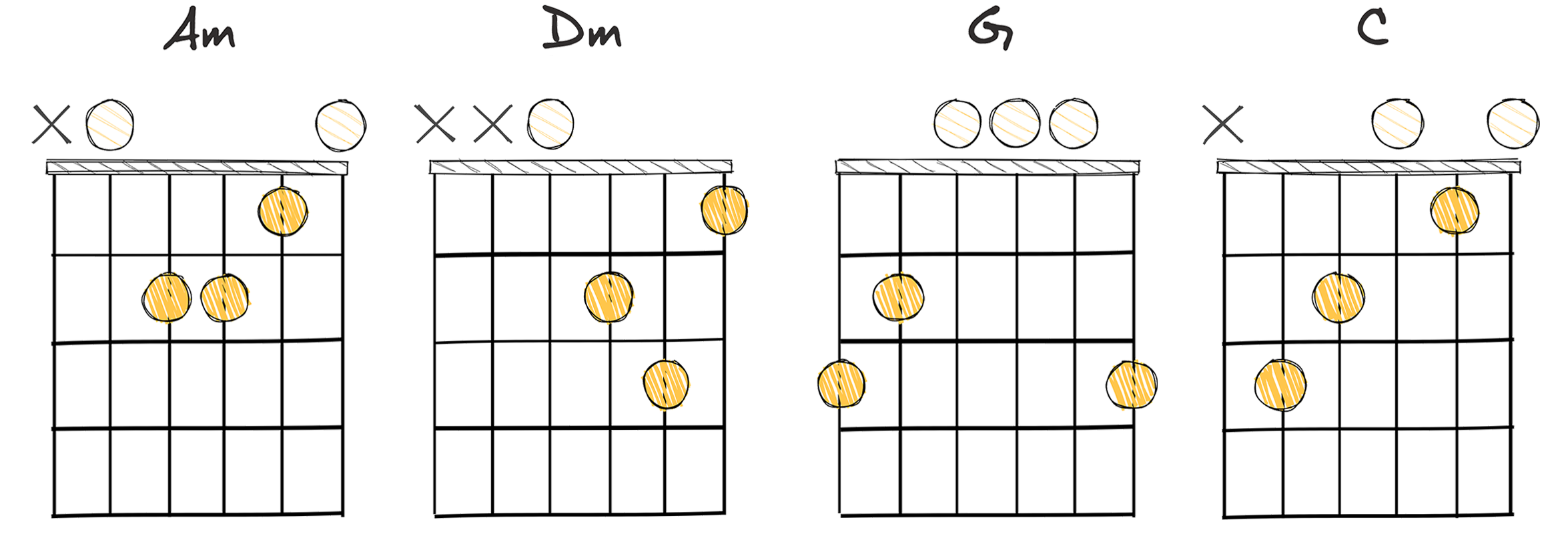
Neo-Soul music generously grew its roots from the soil of rhythm and blues, jazz fusion and funk, creating a unique blend and style that brings forth the intricate chord progressions musicians and listeners have come to admire.
The multi-faceted nature of Neo-Soul’s sound and texture makes it a uniquely challenging yet exciting genre to explore musically.
Among the numerous chord progressions used in Neo-Soul, the vi-ii-V-I progression (6-2-5-1), holds a significant influence in forming its signature sound.
This progression, characterized in the key of C as the chords Am – Dm – G – C, offers a sense of completing a cycle, perfect for adding depth and feeling to your song.
In Neo-Soul music, the vi-ii-V-I progression forms an essential part of its appeal and is often considered Intermediate level owing to the knowledge required to utilize it effectively.
This chord progression’s dynamic nature allows an artist to give their song an added emotional depth, creating a heightened sense of resolution and closure.
Indeed, the vi-ii-V-I arrangement imparts a distinct edginess to Neo-Soul music, giving it an added layer of harmonic complexity that sets this genre apart from others.
The breezy transitions from chord to chord in the vi-ii-V-I progression often add a sense of introspection and pensiveness to the music, making for a truly immersive listening experience.
Employing this harmonic tool can elevate your compositions by adding emphasis to certain areas and eliciting a more robust emotional response from your listeners.
The history embedded in the vi-ii-V-I progression dates back to the Baroque period in European classical music, demonstrating its adaptability and endurance through centuries of musical evolution.
Learning to implement the vi-ii-V-I progression effectively can take time, but it is time well spent, given the richness and sophistication it can add to your music.
Practising and experimenting with this chord progression can help unleash your artistic potential and open up new avenues for expressing your musical ideas in Neo-Soul.
A solid understanding of this progression is an integral part of a Neo-Soul musician’s toolkit, helping to bring out the genre’s distinctive richness and texture.
By truly mastering the vi-ii-V-I progression, you can enrich your compositions with the textured chords and emotional depth characteristic of the Neo-Soul sound.
Understanding and applying this progression does not just contribute to musical eloquence, but also builds a sturdy foundation on which to explore the vast soundscape that is Neo-Soul music.
I-III-vi-ii-IV-V (1-3-6-2-4-5)
An exciting pathway for both seasoned Neo Soul musicians and those looking to infuse their music with this evocative and soul-stirring sound.
The I-III-vi-ii-IV-V progression in G major carries a unique character, blending unexpected twists with familiar resonance. The shift from the I to the III chord adds intrigue, while the flow through the minor vi and ii chords imparts a gentle melancholy. The progression culminates in a satisfying resolution, creating a sound that’s both innovative and nostalgically rich, reflecting the essence of neo-soul..
- Difficulty: Intermediate
- Example: G – B – Em – Am – C – D (Key of G)
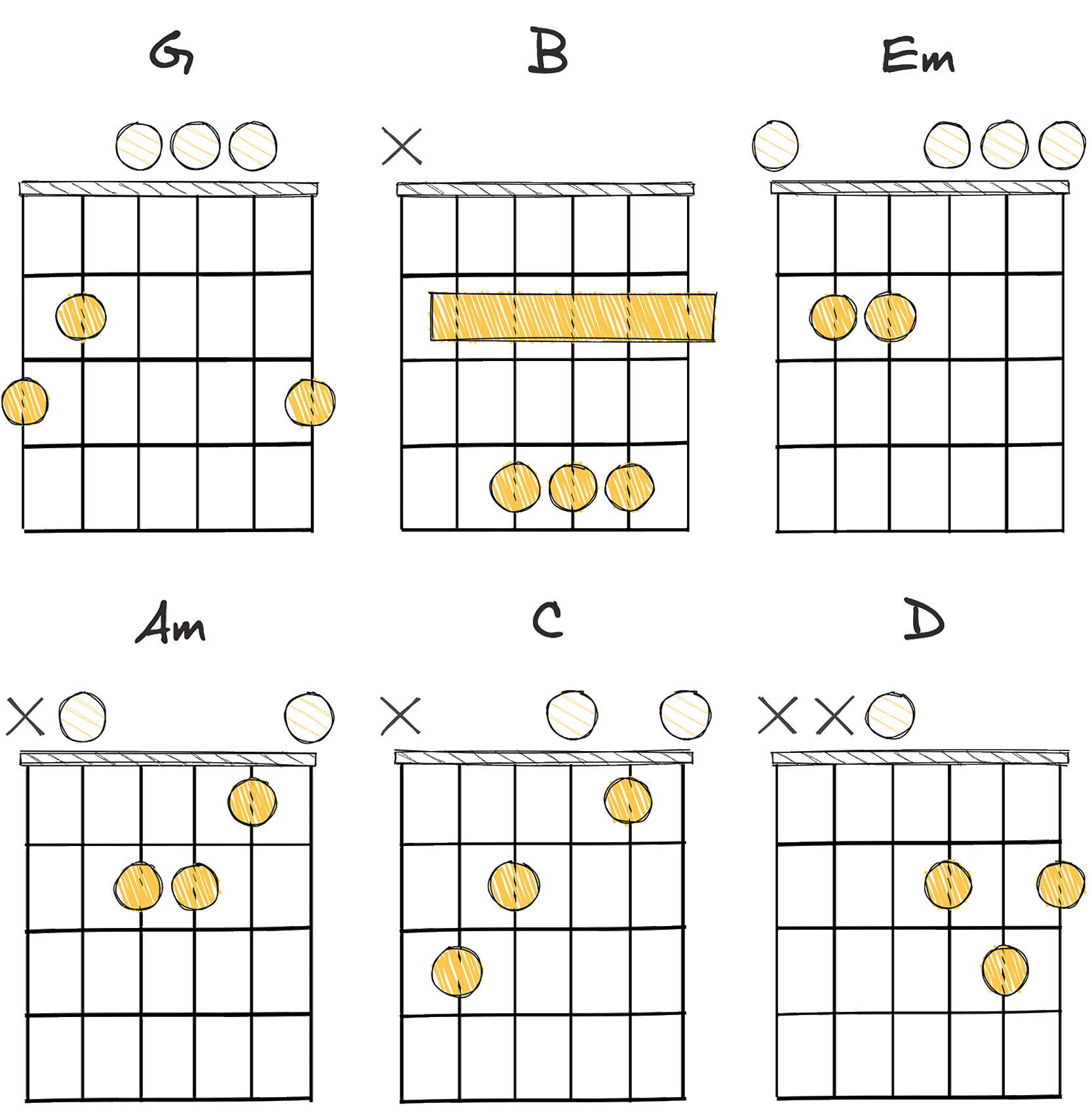
Distinct from the more traditional progressions, the I-III-vi-ii-IV-V provides an innovative twist that echoes the rich textures of Neo Soul.
In the key of G major, this progression translates, of course, to G – B – Em – Am – C – D.
Neo-Soul has adopted this progression, imbuing it with a fresh and contemporary resonance that is both inspiring and reflective.
The choice of the III chord instead of the more conventional IV adds an unexpected flavor, characteristic of the exploratory nature of Neo Soul.
Incorporating this unconventional chord progression contributes to the genre’s unique identity, merging the unexpected with the familiar.
The I-III-vi-ii-IV-V progression invokes a sense of creativity and innovation, hallmarks of the Neo Soul sound.
To craft a true Neo-Soul vibe, artists often enrich these basic chords with colorful extensions and alterations, creating the complex and luxurious extended chords so typical to the genre.
The I-III-vi-ii-IV-V progression is an exciting pathway for both seasoned Neo Soul musicians and those looking to infuse their music with this evocative and soul-stirring sound.
Understanding and mastering this progression is vital for those eager to tap into the deeper realms of Neo Soul music.
Like the architectural blueprint of a beautiful building, this chord progression lays a solid foundation upon which endless musical landscapes can be built.
The blending of the expected and the unexpected, so vividly exemplified in this progression, encapsulates the essence of Neo Soul.
Incorporating this chord progression into your own compositions can add a sophisticated and textured layer to your musical narrative.
Remember, the possibilities are boundless, and creativity is your guide.
The key to success lies in your willingness to experiment, innovate, and embrace the dynamic and captivating world of Neo Soul chord progressions.
So, continue to ride the waves of rhythm and harmony, and lose yourself in the thrilling and artistic journey that is Neo Soul.
Keep on grooving and take the musical roads less traveled.
ii-iii-IV (2-3-4)
Unlock soulful depth with this uncommon, emotive chord progression.
The ii – iii – IV chord progression is a unique, soulful sequence often used in Neo Soul music to create a rich, smooth sound. This progression, moving from the D note to E, then F, adds an unexpected twist to your melodies, really bringing your music to a whole new level.
- Difficulty: Intermediate
- Example: Dm – Em – F (Key of C)
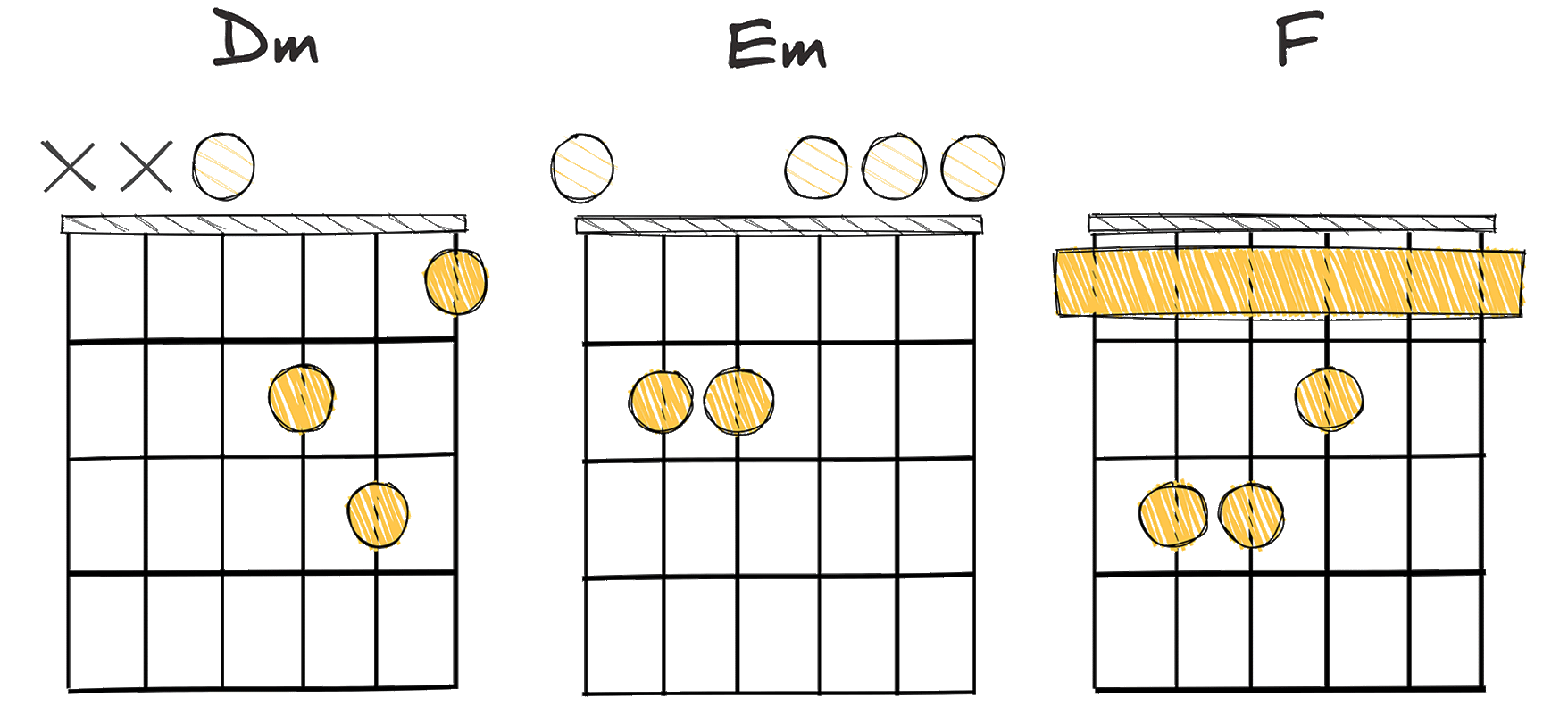
When it comes to music composition, chord progressions are incredibly vital elements.
The ii – iii – IV chord progression, for node, is one such progression that holds an important place in the lexicon of music creation.
Within the realm of Neo Soul music, this progression has had its fair share of usage and experimentation.
Expressive and emotionally profound, the ii – iii – IV progression is notably recognized for its ability to infuse life into songs, elevating the listening experience manifold.
In the example of Dm-Em-F (Key of C), this progression — translated in roman numerals as ii – iii – IV — can foster a unique harmonic interplay, resulting in a sound that is characteristic of the Neo Soul genre.
In most cases, musicians of intermediate capabilities should be quite familiar with this progression — owing to its regular appearance in a wide variety of musical genres beyond just Neo Soul.
This familiarity allows them to utilize the ii – iii – IV progression more effectively, adding more depth and dimensions to their compositions.
Apart from just the theory, understanding and mastering the practical implementation of this progression can contribute significantly towards their evolution as musicians.
Indeed, some of the best known hits in modern music are built around this particular chord progression.
The history of such chord progressions is as fascinating as their musical implications.
From classical symphonies to contemporary Neo Soul tracks, the usage and popularization of the progression has followed a captivating journey.
There exists a strong interconnectivity between different chord progressions, with the ii – iii – IV often being used in conjunction with other progressions such as I-IV-V or vi-ii-V-I to create complex harmonic structures.
Progressions like ii – iii – IV not only provide the melodic groundwork for the music, they also subtly dictate the emotional tone and narrative of a song.
It is important for the budding Neo Soul composer to become intimately familiar with these chord progressions and understand how to use them effectively.
After all, chord progressions like ii – iii – IV are tools in the musician’s toolkit, enabling them to shape the soundscape of their compositions, eliciting responses from the audience, and fundamentally enriching the music through harmonic complexities.
While these progressions may be intimidating to musicians at first, with time, practice, and comprehension, they can become second nature.
Indeed, it is the journey towards this understanding and mastery of neo soul chord progressions that will truly elevate your music.
ii-IV-V (2-4-5)
This progression adds rich, soulful undertones to any composition.
This ii-IV-V (2-4-5) progression is a popular choice within the Neo Soul genre, characteristically creating a smooth, jazzy feel. It’s a compelling progression that often serves as the foundation for emotionally driven songs and can seriously enhance the depth and complexity of your music compositions.
- Difficulty: Intermediate
- Example: Dm – F – G (Key of C)
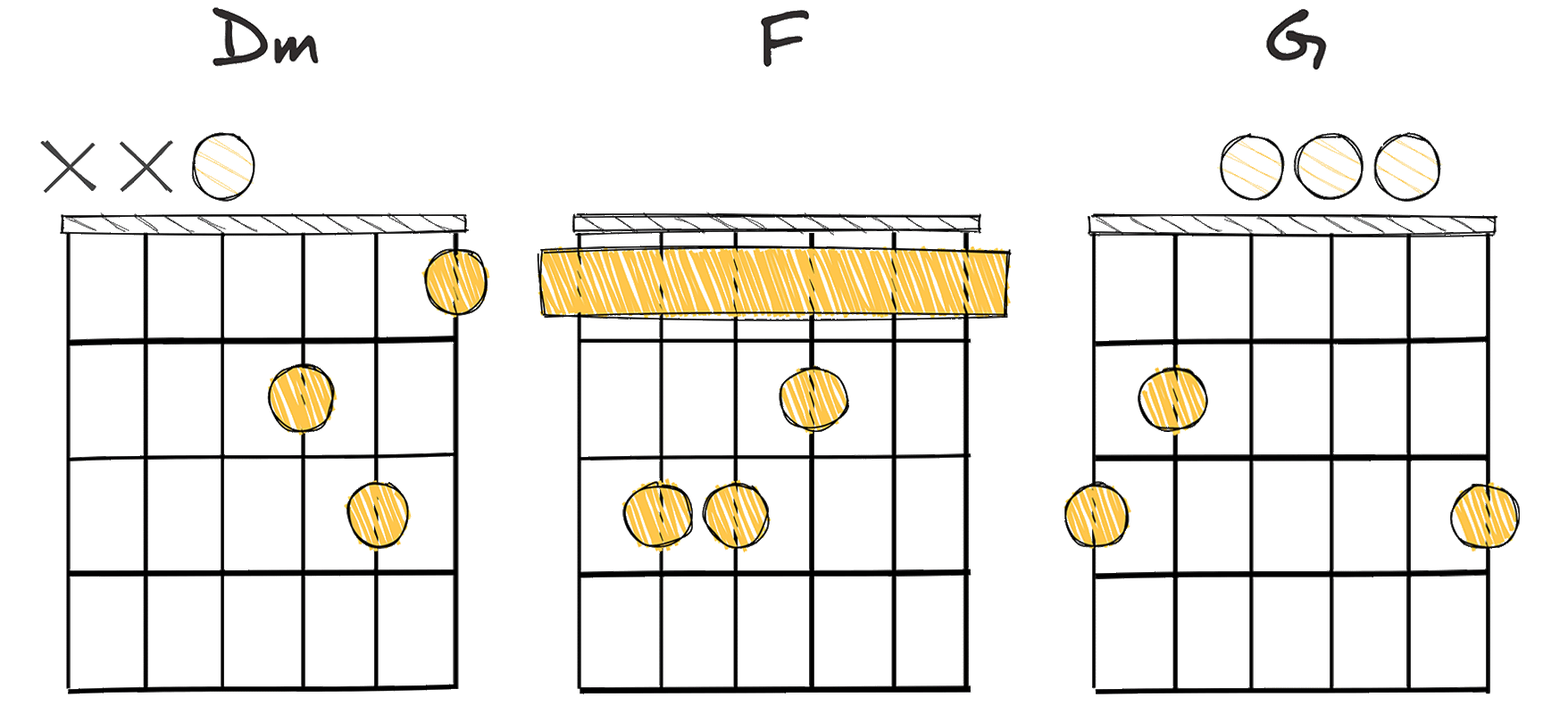
The ii-IV-V (2-4-5) chord progression has deeply profound roots that have greatly enhanced the world of music.
Commonly found in jazz, blues, and rock genres, this chord progression has emerged as a central pillar in many neo soul songs.
The unique combination of these three chords creates a rich, soulful sound that characteristically defines the overall tone of the neo soul genre.
In the key of C, the ii-IV-V chord progression would be transposed to D minor – F Major – G Major, a chord sequence that has been utilized in countless songs throughout music history.
Following the sequence mentioned above, the dramatic tension and release that this progression introduces captivates the audiences ears with its harmonic resonance.
Mastery of this chord progression requires a solid understanding of music theory and some intermediate level of competence on an instrument.
The transition from the ii chord to the IV chord is in fact a moderate challenge to many musicians; the crucial timing and tonal changes in this shift can be quite tricky to execute flawlessly.
Yet, with practice and perseverance, this progression becomes an invaluable tool in a musician’s chord progression arsenal, enabling them to produce a much wider array of sonic flavors and emotional responses in their music.
The ii-IV-V progression has not only stood the test of time, but its use in various genres and eras of music has posited it as a consummate chord progression, creatively exploiting every facet of its harmonic potential.
Throughout the history of music, influential artists such as Stevie Wonder, Erykah Badu, and Jill Scott have masterfully made use of the ii-IV-V progression, infusing their songs with a soulful, sophisticated tonal quality that is unmistakably neo soul.
Thus, the ii-IV-V (2-4-5) progression’s inherent versatility, harmonic richness and emotional depth makes it a prime staple in the neo soul genre,
Additionally, analyzing these songs can provide a wealth of insight for aspiring musicians hoping to broaden their understanding of chord progressions and their effective use in song composition.
With talent and persistence, the beautiful complexity inherent in the ii-IV-V chord progression can be unlocked, truly elevating one’s musical creation to a whole new level.
Embracing and mastering this chord progression can indeed serve as a powerful stimulus for any musician’s musical journey and growth.
vi-IV-V-iii (6-4-5-3)
The vi-IV-V-iii progression in D major (Bm – G – A – F#m) melds longing, brightness, and melancholy, encapsulating neo-soul’s emotional essence..
The vi-IV-V-iii progression in D major (Bm – G – A – F#m) is a nuanced and emotive sequence. Starting with the introspective B minor, it blossoms into the warmth of G major before rising with A major’s hope, and finally settling into F# minor’s reflective melancholy. This blend crafts a sound that resonates with the innovative spirit and emotional richness of neo-soul.
- Difficulty: Intermediate
- Example: Bm – G – A – F#m (Key of D)
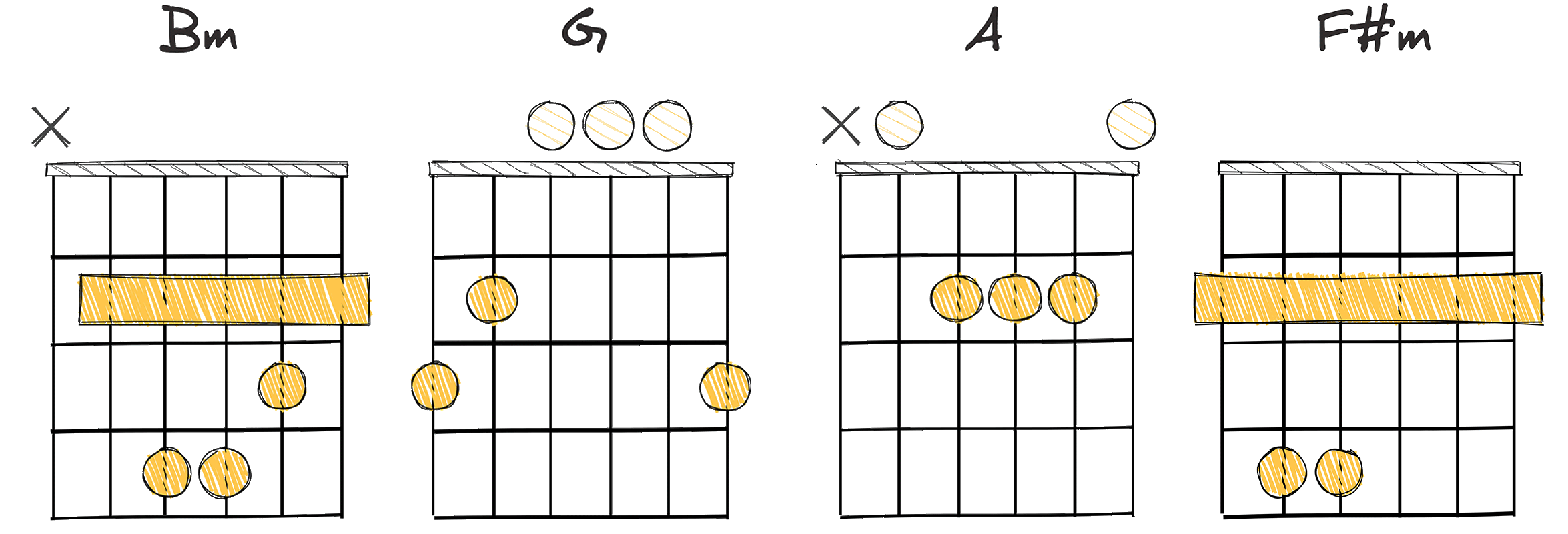
The chord progression vi-IV-V-iii (6-4-5-3), though perhaps less conventional than some, has carved a distinctive niche within the modern soundscape of neo-soul.
In the key of D major, this progression unfolds through the chords B minor, G Major, A Major, and F# minor, weaving a rich harmonic fabric.
While its roots may not be as deeply entrenched in classical or jazz traditions, this sequence offers a unique allure, bridging introspective melancholy with a touch of uplifting resolve.
The movement from the vi to the IV chord adds a shade of complexity, while the transition to the V and then to the iii chord injects a dose of soulful tension and release, a signature trait in neo-soul music.
This progression’s charm in the neo-soul genre can be traced to its ability to balance harmonic innovation with an underlying simplicity, forming a musical bridge that connects emotion and intellect.
The vi-IV-V-iii progression is like a fresh breeze in a lush garden, aligning the soulful beats of R&B with the textured nuances of jazz, encapsulating an emotionality that resonates with the neo-soul ethos.
Approaching it from a practical standpoint, this progression offers a stimulating challenge for the intermediate player, with the transitions between the chords presenting a delightful complexity.
The shift between B minor and G Major, for instance, demands attention and precision, making a strong case for a solid understanding of various chord shapes and finger placements.
It’s not unusual to find this progression adorned with inversions, rhythmic variations, and harmonic embellishments, enhancing its appeal and adaptability.
The vi-IV-V-iii chord progression is an inspiring palette that can lay the groundwork for an enthralling neo-soul composition.
Its expressive potential and distinctive character have found favor with contemporary neo-soul artists, looking to infuse their works with a taste of something both familiar and refreshingly new.
In essence, immersing yourself in the vi-IV-V-iii progression is like embarking on an enriching musical voyage, one that promises to add depth and flair to your neo-soul creations.
It’s a testament to the genre’s continual evolution and a celebration of musical exploration and emotional connection.
vi – IV – I – V (6-4-1-5)
This progression exudes a lush, emotional narrative for your melody.
This vi-IV-I-V chord progression is a common structure in neo soul music known for its smooth and emotive flow. The transition from the minor vi chord to the major IV chord, followed by the resolution to the root I chord and the dominant V chord, creates a rich harmonic progression that adds depth to any composition.
- Difficulty: Intermediate
- Example: G#m – E – B – F# (Key of B)
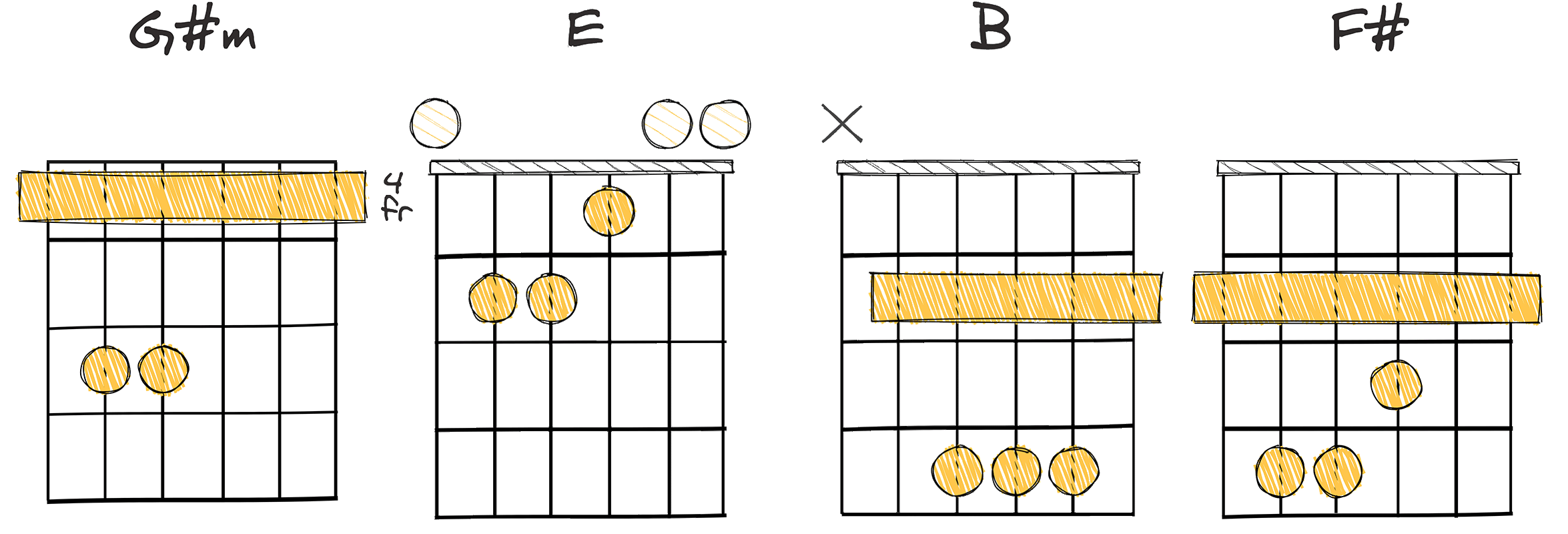
Neo soul is a genre that is known for its unique and powerful chord progressions, and one of the best examples of this is the vi-IV-I-V progression, or in the key of B, G#m – E – B – F#.
This interesting progression is popular in Neo Soul music and gives a distinct flavor that sets it apart from other genres.
The vi-IV-I-V chord progression was first widely used in popular music in the 1950s and 1960s.
It has roots in the classical music tradition, and composers often use this progression to build a sense of tension and resolution in their compositions.
As a crucial aspect of the Neo Soul genre, this catchy chord progression lends a unique sound, creating an emotional connection between the musician and listener.
The sound seems to evoke a sense of nostalgia and longing.
One of the most significant elements of using this chord progression is the movement between the minor vi chord and the major IV chord.
This harmonic movement creates an intriguing contrast that is both comforting and melancholic at the same time.
It is ideally the mix of minor and major chords in this progression that makes a song’s tonality intriguing and captivating – revealing the true soul of Neo Soul.
This is also where a lot of the emotion in Neo Soul music comes from.
The contrast between these two chords creates a sense of tension and resolution, which mirrors the often emotional lyrics found in this genre.
The major I chord, being the tonic or ‘home’ chord in the progression, provides a resolution to this tension, often sounding final and complete.
Lastly, the major V chord, which is usually used to lead back to the I chord, provides a feeling of anticipation and sets the stage for the cycle to begin again.
This progression is intermediate to play, making it accessible to many musicians while still offering a challenge.
This accessibility is part of what has made it such a widespread chord progression in Neo Soul music.
Artists such as Erykah Badu, D’Angelo, and Maxwell have all used this specific chord progression in their music, contributing to its popularity in the genre.
The sensual mood created by this progression sets the perfect backdrop for the singer’s heartfelt, seductive lyrics.
However, the vi-IV-I-V progression is not exclusive to Neo Soul.
It’s widely used in various genres, including pop and rock, underlining its versatility and universal appeal.
Despite its widespread use, the vi-IV-I-V chord progression in the genre of Neo Soul manages to maintain its distinctive character and soulful vibe.
Finally, while the vi-IV-I-V progression is a staple in Neo Soul, the genre is also characterized by its willingness to experiment with chord combinations and variations.
This adds to the complexity and richness of the musical landscape of Neo Soul.
Therefore, understanding and mastering this progression can be a significant first step for musicians looking to delve deeper into the soulful world of Neo Soul.
iii-vi-ii-V (3-6-2-5)
Embrace a classic, jazzy turn with the smooth iii-vi-ii-V progression.
The iii-vi-ii-V chord progression is a classic four-chord progression in neo soul music, offering a smooth transition between chords and a rich, complex sound. A staple in many genres, including jazz and pop, this progression provides a base for melodic exploration and expresses a wide range of emotions, making it a valuable tool for elevating compositions.
- Difficulty: Intermediate
- Example: Em – Am – Dm – G (Key of C)
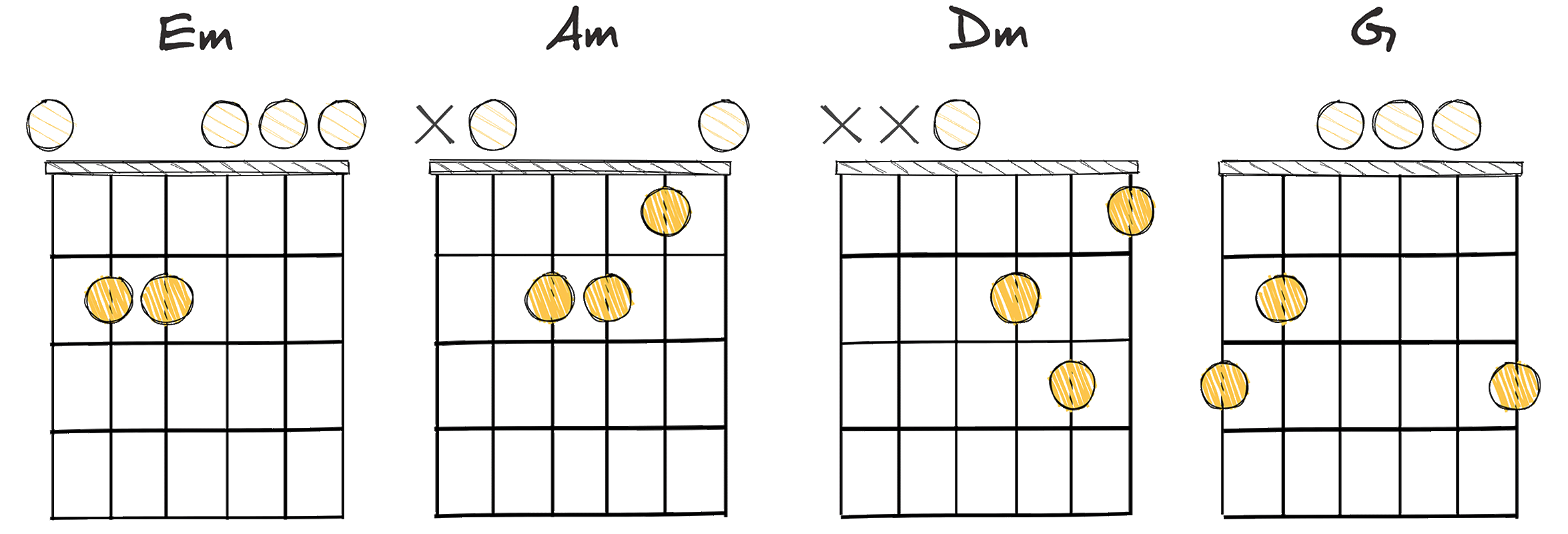
The iii-vi-ii-V (3-6-2-5) chord progression is a powerful tool in the arsenal of any neo-soul musician.
This four-chord sequence is notably dynamic and versatile, capable of lending a unique flavor to compositions across a variety of genres, but it finds its most profound expression in the realm of neo-soul music.
Neo-soul, with its rich harmonic landscape and deeply emotive sonic palette, benefits enormously from the intricate nuances and the expressive potential offered by the iii-vi-ii-V progression.
This particular chord progression gained prominence in the mid-20th century, employed by jazz musicians for its strong sense of harmonic motion and the smooth voice leading it provided.
Its historical usage and development are what make it an intermediate progression to play, and worth learning for any aspiring musician regardless of their favored genre.
This historic context lends the iii-vi-ii-V progression a sophisticated air, marking it out as an advanced harmonic technique that can elevate any composition.
The iii-vi-ii-V progression is a testament to the interplay of tension and release, a key element across many music genres but especially potent in neo-soul music.
This is particularly seen when transitioning from the iii chord to the vi chord, a move that increases tension, only to be masterfully released through the ii to V transition, providing resolution to the progression.
These attributes make the iii-vi-ii-V progression a crucial tool for songwriters and composers working within the neo-soul genre.
The innovative use of this chord progression transforms a simple melody into a rich sonic tapestry, full of emotional depth and musicality.
Armed with the knowledge of how to utilize the iii-vi-ii-V progression, the possibilities for creating vibrant, deeply resonant neo-soul music are virtually limitless.
By weaving the iii-vi-ii-V progression into the fabric of your compositions, you will be walking in the footsteps of neo-soul greats and continuing a tradition of innovative, emotive songwriting.
IV-iii-ii-I (4-3-2-1)
A descending progression offering a soulful, melancholic musical narrative.
The IV-iii-ii-I progression is a popular sequence in neo soul genres, known for its smooth, relaxing, and emotive sound. Starting from the fourth (IV), it descends stepwise through the minor third (iii) and second (ii) chords before resolving to the tonic (I), producing a continuous downwards movement that’s both harmonically rich and pleasing to the ears.
- Difficulty: Moderate
- Example: F – Em – Dm – C (Key of C Major)
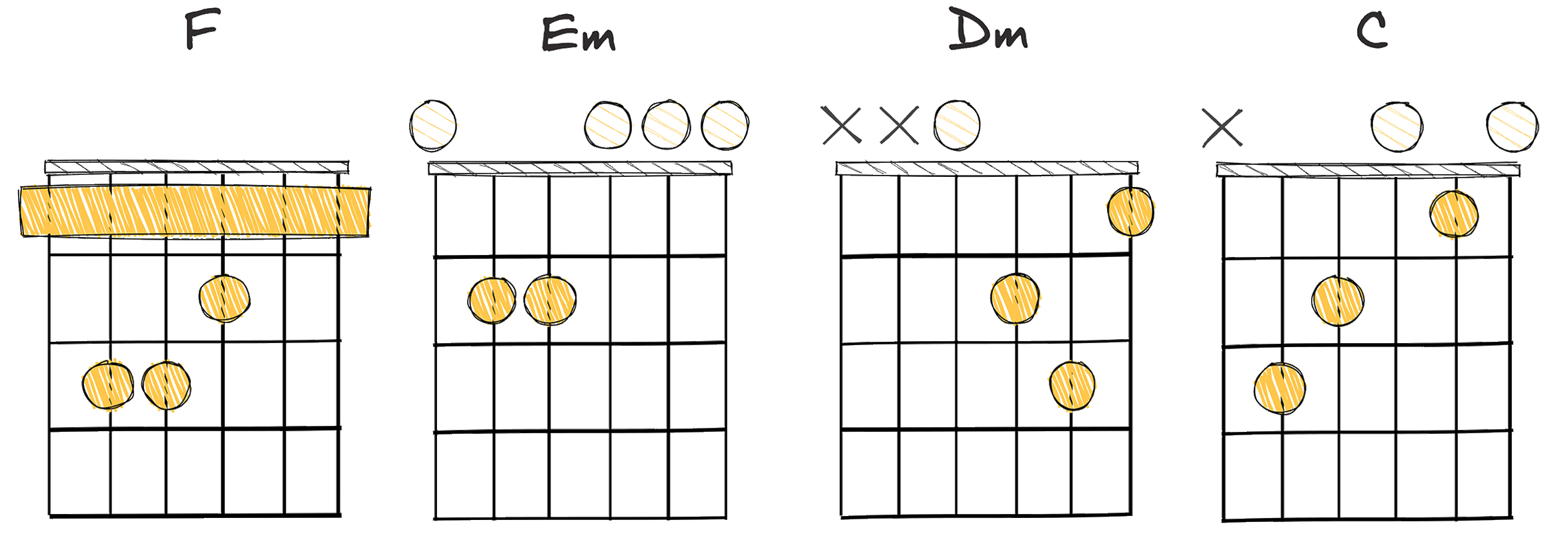
Neo soul has gradually been making a name for itself in the music industry, with its complex sophisticated chords that are unique and intriguing.
One chord progression that has really caught the ears of many musicians and producers is the IV-iii-ii-I progression, which in the key of C major translates as F Major – E Minor – D Minor – C Major.
Within the context of neo-soul music, this chord progression lends itself to a smooth, relaxed ambiance with its stepwise movement and harmonic richness.
The progression’s descent creates a down to earth and homely feeling of familiarity, while still keeping an air of sophistication with the utilization of minor chords.
These particular characteristics of the IV-iii-ii-I chord progression have been incredibly conducive in instigating a ‘soulful’ vibe, a vibe that is distinctively characteristic of neo-soul genre.
As with any chord progression, the emotion and tonal color that it can evoke greatly relies on the rhythm and articulation that the chords are being played at.
Despite its mild complexity, this progression is moderate to play, particularly for pianists and guitarists who have a decent understanding of chord shapes and transitions.
The IV-iii-ii-I progression was prominently popularized in several neo-soul hits.
Although these chords gradually descend in a stepwise manner, the harmonic interplay between these chords presents a complex melody that is truly soul-stirring.
On its own, each chord carries a distinctive color and character; together, they interlace to create a narrative that is emotionally evocative.
This is what sets the IV-iii-ii-I progression so uniquely apart; its ability to tell a story without a single word, using just the resonance and sonority of each chord in progression.
Many neo-soul players also like to include various chord extensions and voicings in order to add further depth and flavor to this progression.
The addition of these specifics not only enriches the harmonic content of the music, but also showcases the technical virtuosity and theoretical knowledge of the player.
The magic of the IV-iii-ii-I progression truly lies in the individual’s ability to interpret and perform it.
Despite its simplicity, it carries a complex raw emotion that still remains elegant and sophisticated.
I-vi-ii-V (1-6-2-5)
Elevate your sound with this classic, smooth neo soul progression.
The I-vi-ii-V chord progression, commonly used in Neo Soul genre, provides a soothing and hypnotic rhythm that can really enrich your musical composition. This progression, often referred to as the “turnaround,” is notable for its cyclic movement and carries a smooth, gentle flow that can evoke a deep emotional response, making it a powerful tool for songwriters and composers.
- Difficulty: Intermediate
- Example: G – Em – Am – D (Key of G)
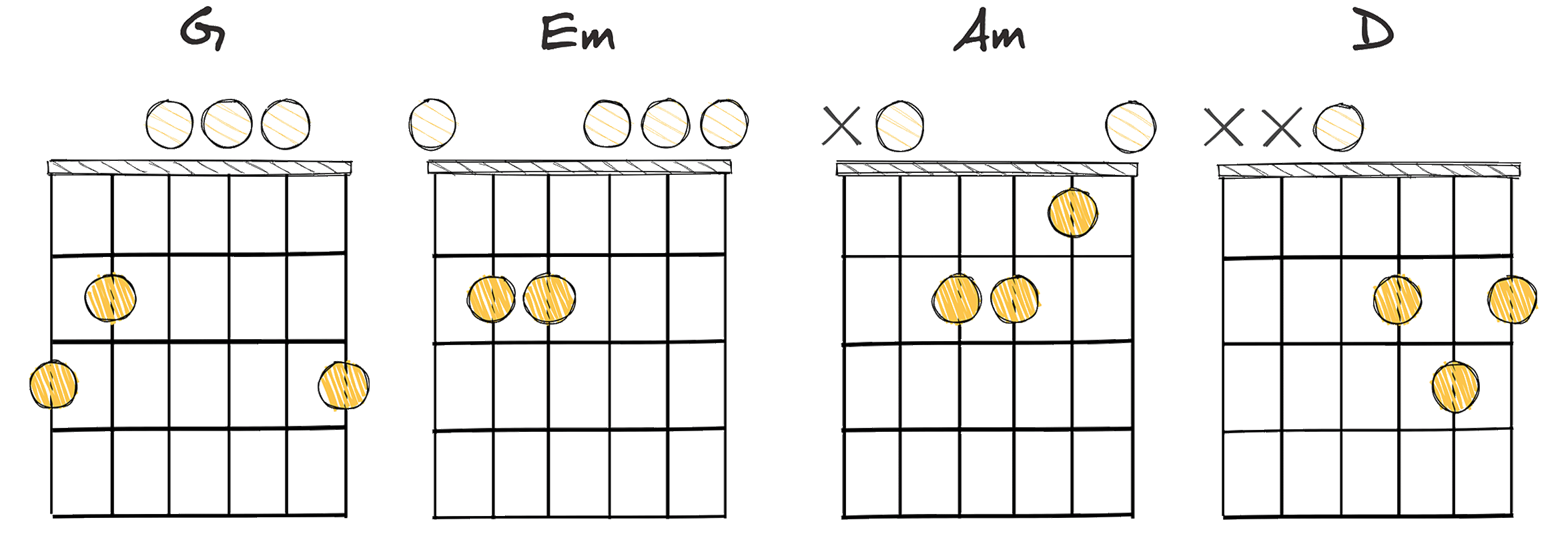
Navigating through the vastness of chord progressions can often feel like a maze for many aspiring musicians, yet understanding the intermediate chord progression I-vi-ii-V – G – Em – Am – D, in the Key of C – can open up endless musical possibilities, particularly in the realm of Neo Soul music.
Also known as the 1-6-2-5 chord progression, this sequence flourishes in various genres but has seen extensive use in the thriving world of Neo Soul.
Aligned with its jazz-influenced roots, Neo Soul music often incorporates more intricate chord progressions like the I-vi-ii-V to create its unique and distinctive sound.
The foundational progression follows a cyclical route that can trigger just the right kind of soulful melody setting Neo Soul apart from other music genres.
This chord progression has been adopted and adapted by numerous artists in the Neo Soul genre, including the likes of Erykah Badu and D’Angelo.
Intriguingly, the I-vi-ii-V chord progression isn’t rigidly static but instead transforms organically throughout the track, emphasizing Neo Soul’s inherent emphasis on musical exploration and individuality.
As with Badu’s track, the transposition of the chords from their respective Major or minor keys forms a subtle yet potent alteration in the progression that energizes and enriches the Neo Soul groove.
The fluidity and flexibility of this progression naturally lend itself to Neo Soul compositions, encouraging a rich landscape of harmony and rhythm that elevate the music.
At its core, the I-vi-ii-V progression is a time-honored musical blueprint translated into the Neo Soul idiom.
By delving into the historical roots and theoretical underpinnings of the I-vi-ii-V chord progression, musicians can further refine their understanding and application of this integral aspect of Neo Soul music.
Thus, mastering, manipulating, and incorporating the I-vi-ii-V progression will not only enhance your Neo Soul compositions but will also open up the door for endless musical possibilities.
I-bIII-bVI-V (1-b3-b6-5)
A romantic and vibrant progression, defining Neo Soul’s evocative essence.
This progression introduces a tonal complexity within Neo Soul by shifting from the root to a flat third and flat sixth, before resolving back to the dominant seventh. Its distinct usage of non-diatonic intervals adds richness and depth, creating a profound sense of emotion and variety that can truly elevate the feel of a musical piece.
- Difficulty: Intermediate
- Example: C – Eb – Ab – G (Key of C Major)
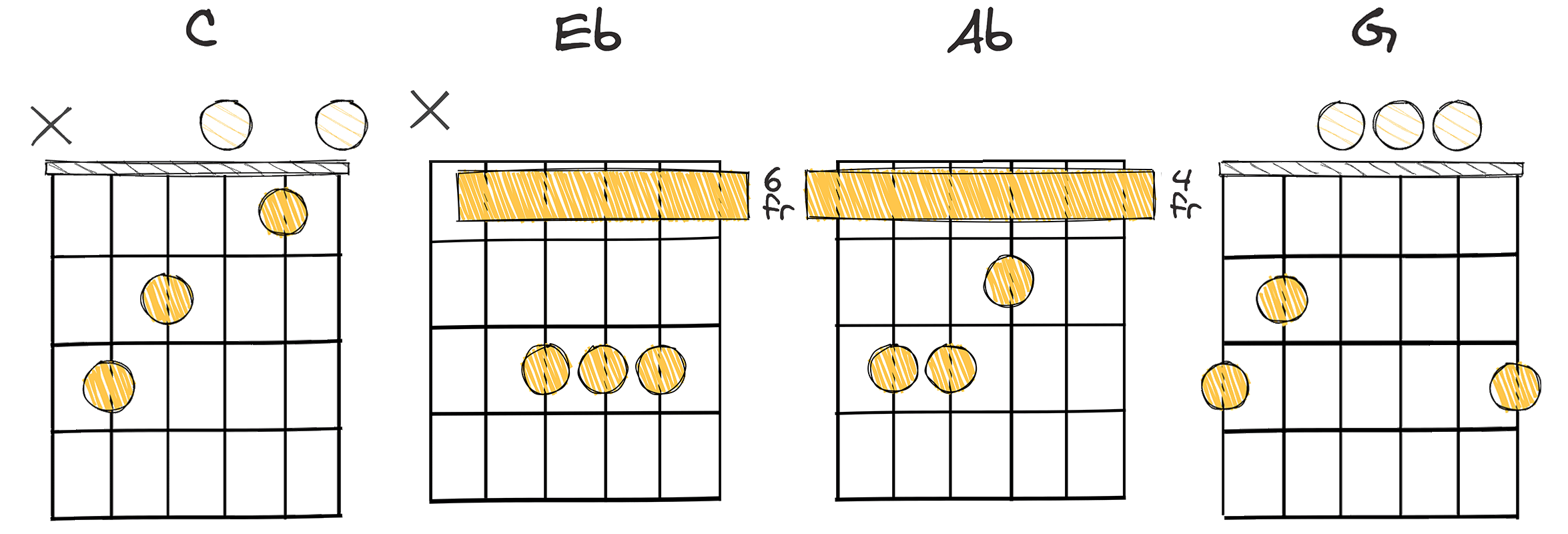
The I-bIII-bVI-V chord progression, also known in C Major as C – Eb – Ab – G, is undeniably popular in the Neo Soul genre, and is responsible for providing some of the most remarkable sounds of the style.
Neo Soul musicians often lean on this progression due to its ability to offer a sophisticated, complex tone that helps elevate their music to another level altogether.
This chord progression is intermediate level in terms of difficulty, but its impact can be profound, providing a lush, deep sound that can help to set the emotional tone of a track.
Understanding and mastering this progression can significantly enhance the musician’s flexibility and creativity in their compositional practices and performances.
It’s worth noting how this complex mixture of harmony and melody tends to stimulate a deep emotional response in listeners.
The birth of the I-bIII-bVI-V progression is deeply rooted in the history of music theory.
It has been an integral part of many musical genres, including blues and jazz, before finding its new home in Neo Soul.
The transition from I to bIII, known as a chromatic mediant relationship, offers a beautiful aesthetic and harmonic appeal that is characteristic of this progression.
It’s a small, but critical change that makes a substantial impact on the track’s musicality.
The movement from bIII to bVI and then to V adds tension and heightens the emotional integrity of the song before it resolves smoothly back to the home chord, the I.
Therefore, it is no surprise that this progression can bring both richness and complexity to a track, elevating the music of the artist using it.
It’s worth noting that the I-bIII-bVI-V progression isn’t just about playing chords; it’s about understanding and communicating a particular emotion or feeling to the audience.
This chord progression helps to achieve that with its dynamic nature.
Finally, remember that the ultimate key to success when using the I-bIII-bVI-V progression is to fully understand its mechanics and to truly express its emotional depth in your performance.
IM7-IVm6 (1M7-4m6)
This unique progression infuses neo soul music with a somber twist.
The Imaj7-IVm6 (1maj7-4m6) chord progression introduces a distinctive blend of major and minor harmonic components that give the music a soulful touch. The progression arrests your ear with its unexpected yet satisfying shift from the positivity and stability of a major 7th chord to the rich, complex texture of a minor 6th chord.
- Difficulty: Intermediate
- Example: CM7 – Fm6 (Key of C)
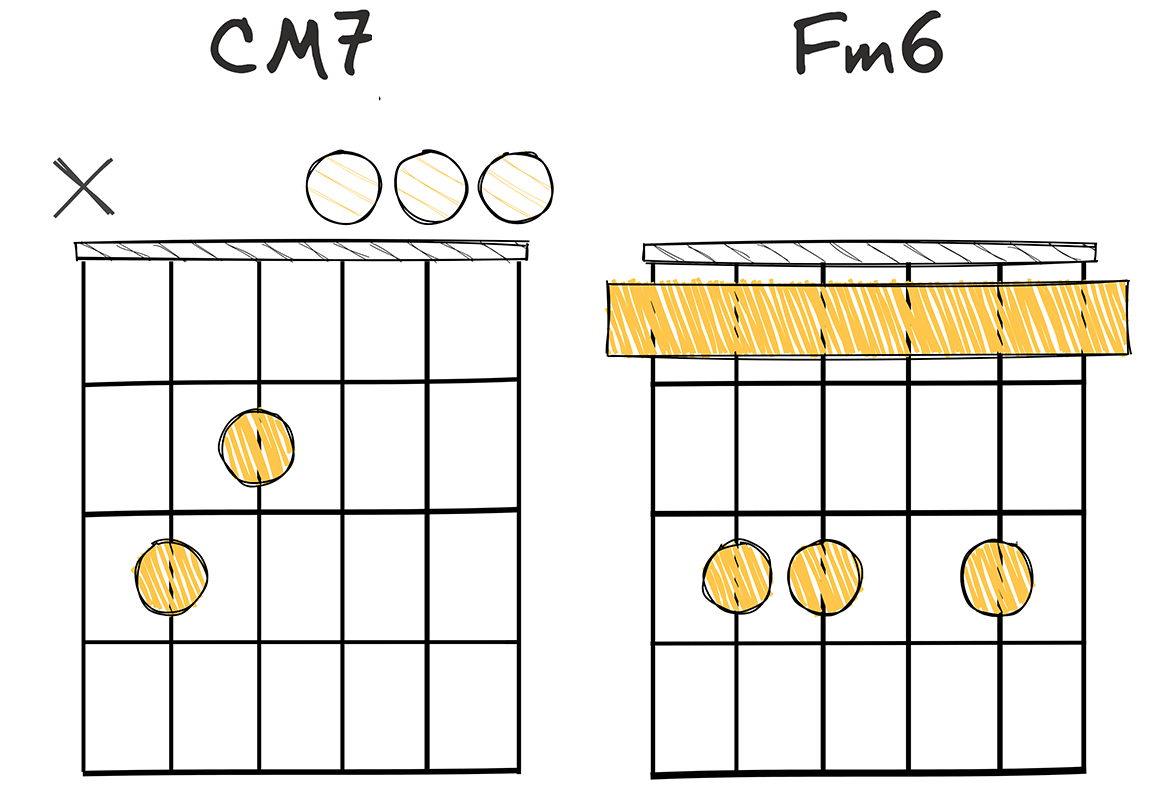
Neo Soul chord progressions have a deep root in traditional soul, R&B, and gospel music.
Yet they borrow aspects from contemporary genres such as hip hop and contemporary pop.
The IM7-IVm6 chord progression (1M7-4m6) stands as one of the exemplary embodiments of these hybrid musical vocabs.
The usage of the IM7 chord sequence often implies a laid-back and serene ambiance, aligns perfectly with the soft, soothing aesthetics of Neo Soul.
Importantly, the chord’s ‘major 7th’ feature is reminiscent of musical styles historically associated with African American communities, presenting a mild nostalgic tint to the whole sonic picture.
On the flip side, the application of IVm6 is more tailored to the contemporary taste.
This chord’s minor structure, together with its inherent tension derived from the tritone between the 4th and the 6th degree, adds a depth to the musical narrative, bridging it to the modernity of Neo Soul.
Furthermore, the subtle antithesis between IM7 and IVm6 gives rise to musical dynamism, an essential drag for listeners’ attention.
Even though the progression takes the format of a two-chord sequence, its rich harmonic texture compensates for its structural simplicity.
The IM7-IVm6 progression is quite prevalent in the hands of Neo Soul titans.
In the relative key of C, the chords would be CM7 (IM7) – Fm6 (IVm6).
Songwriters admire using this progression for its convenience in the songwriting process as well, due to its sheer musicality and peculiar balance between complexity and simplicity.
However, keep in mind that although essential, understanding and executing these chords are only the tip of the iceberg in composing a Neo Soul piece.
The definitive touch owes much to rhythmic sophistication, melodic invention, and most importantly, your own artistic interpretation, thus opening up a broad window of possibilities.
I-vi-IV-V7 (1-6-4-5)
A timeless, uplifting progression lending a distinct soulful vibe.
The I-vi-IV-V7 chord progression is widely used in neo-soul music, creating a rich and emotionally resonant sound. This sequence provides a smooth transition and harmonic balance between chords, which can greatly enhance the depth and quality of your compositions.
- Difficulty: Intermediate
- Example: C – Am – F – G (Key of C)
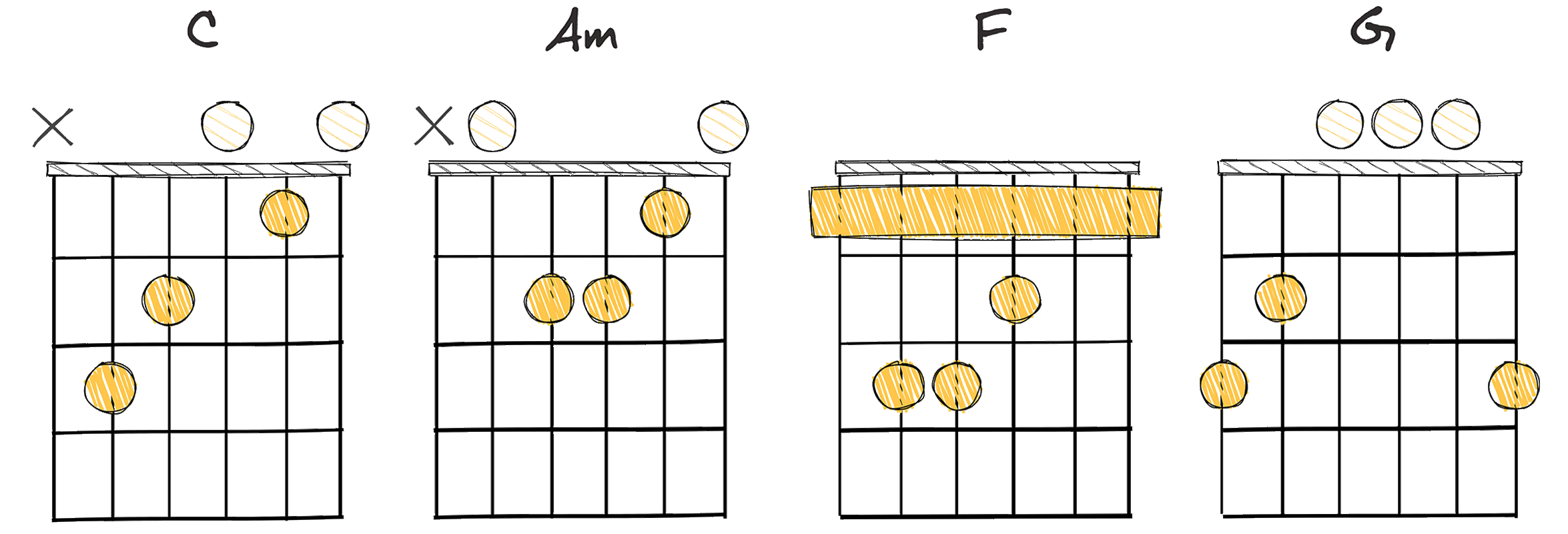
The I-vi-IV-V7 or also known as 1-6-4-5 progression is a standout chord progression in the genre of Neo Soul music.
This progression has its foundation in the rich traditions of Jazz, R&B, and Soul music, with elements of gospel, funk, and blues thrown in for good measure.
Historically, it has been extensively used in a variety of musical genres, from pop to rock, to create catchy and memorable hooks.
The I-vi-IV-V7 progression being used in Neo Soul is a reflection of the genre’s roots in traditional African American musical styles, which are characterized by their emphasis on complex chordal structures.
This is because Neo Soul music often makes use of extended and altered chords, leading to a richer, fuller sound.
Moreover, with its stark emotional resonance and flexibility, the I-vi-IV-V7 progression lends itself beautifully to the soulful vibes of Neo Soul music.
While intermediate in its level of complexity, this particular progression offers a rewarding challenge to musicians.
Comprising the chords C – Am – F – G (when in the Key of C), this progression imparts a distinctive blend of major and minor tones that strikes an engaging balance between joy and melancholy.
In fact, many renowned Neo Soul artists often employ this progression in their compositions, figuring out exciting ways to improvise and add unique flavor to it.
Mastering the I-vi-IV-V7 progression can truly open up a world of possibilities for one’s own compositions in Neo Soul.
It allows musicians to tap into the profound aesthetical language of Neo Soul, articulating their musical ideas with greater complexity and depth.
Therefore, getting comfortable with this chord progression is an invaluable tool to elevate one’s musicality and expressiveness, making the time and effort invested in learning it worth every bit.
Demonstrating a deep understanding of Neo Soul’s building blocks such as the I-vi-IV-V7 progression is integral for any musician aspiring to excel in this genre.
I-III-IV-iv (1-3-4-4m)
Delivers soulful resonance with an unexpected minor twist.
This unique chord progression, I-III-IV-iv (1-3-4-4m), commonly used in Neo Soul music, brings a harmonic richness and variety to any composition. The shift from the major to minor fourth chord creates a striking emotional resonance, giving depth and adding an unexpected twist to the sound.
- Difficulty: Intermediate
- Example: C – E – F – Fm (Key of C)
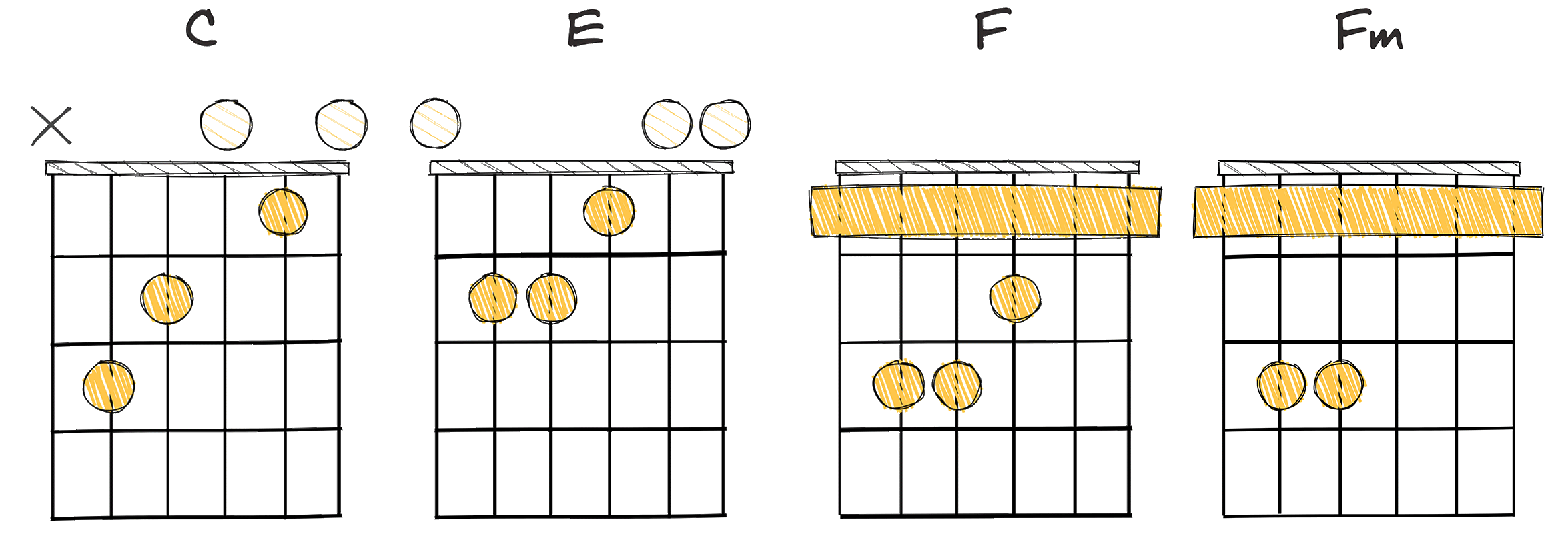
One particularly striking chord progression that has been instrumental in shaping the sound of Neo Soul is the I-III-IV-iv progression.
This progression, often appearing in keys such as C Major with the chords C Major – E Minor – F Major – F Minor, provides a hearty foundation on which the distinct, emotive soundscapes of Neo Soul can be built.
While the first three chords of this progression may seem relatively straightforward, the use of a minor iv chord instead of the typical major IV adds a layer of intrigue and suspense to the mix.
This progression represents a bit of a twist on the classic IV-I cadence, using the unexpected minor iv to add an extra touch of melancholy or tension before resolving back to the tonic.
This unique alteration creates a sense of surprise in the listener, and aids in shaping the uniquely atmospheric, often introspective quality of Neo Soul music.
The I-III-IV-iv progression also allows for great versatility in terms of voicing and instrumentation.
In light of this progression’s intermediate level of difficulty, aspiring musicians will find it both challenging and rewarding to explore and master.
This particular progression’s rich harmonic background gives musicians an opportunity to experiment with different textures and melodic ideas.
One might argue that the true beauty of the progression lies in its ability to carry a song’s emotional narrative through harmonies alone.
The popularity of this progression in Neo Soul music, however, is not a recent phenomenon.
The I-III-IV-iv progression boasts a remarkable legacy that stretches back decades in the history of popular music.
This thoughtful application of the I-III-IV-iv progression is a clear demonstration of how critical chord progressions are to shaping the overall feel and direction of a piece of music.
So, while the I-III-IV-iv progression is definitely unique and intriguing, it’s the ways in which musicians apply, interpret, and experiment with this progression that truly extend its horizons within the realm of Neo Soul.
To conclude this part, musicians eager to explore the heart and soul of Neo Soul should give this progression a thoughtful study and practice satisfying it offers both in sound and technique.
The Bottom Line
Exploring these chord progressions provides a comprehensive insight into the myriad of possibilities that exist within music composition.
These commonly used sequences, from the standard I-IV-V and ii-V-I to more complex ones like I-bIII-bVI-V7 and IM7-IVm6, highlight the vast array of harmonic structures that can enrich a song or a piece of music.
They prove how a proper combination of chords can make music not only melodious but also emotionally stirring.
Such knowledge empowers musicians to navigate through the infinite musical landscape with more confidence and creativity.
Therefore, knowing and understanding these chord progressions is fundamental for any aspiring composer or songwriter to craft memorable and affecting music.
In love with guitars, and gear; expert in all things music! Been writing about guitars for about 5 years and counting. Born in the ’90s. Alma Mater: University of Havana. Always curious, trying to understand the world. #TeamFender


